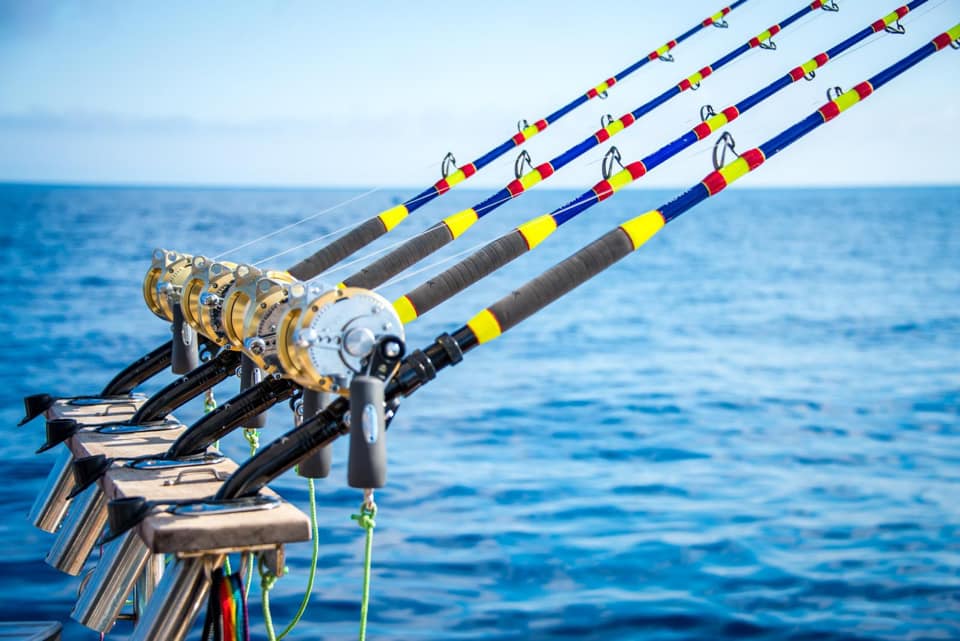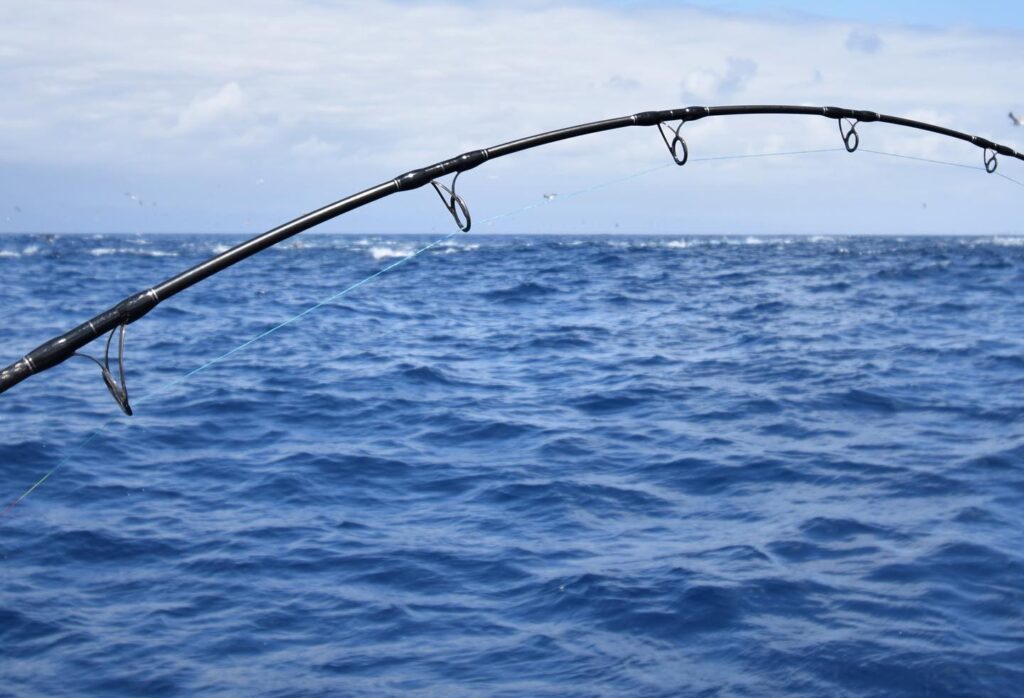The Ultimate Guide to Choosing the Best Fishing Line for Trolling
Trolling is a popular and effective angling method used by both freshwater and saltwater fishermen. The essence of trolling is to drag lures or baited hooks from a moving boat to mimic the movement of prey, enticing predatory fish to strike. However, not all fishing lines are created equal, especially when it comes to trolling. Let’s delve into the world of fishing lines and understand which one is best suited for your trolling needs.
Monofilament (Mono) Line
Monofilament, affectionately known as “mono”, is perhaps the most widely used fishing line. Made from a single strand of nylon, its popularity for trolling is understandable.
Pros:
- Stretchy Nature: This stretch can act as a shock absorber when a fish hits, reducing the risk of a broken line or pulled hook.
- Cost-Effective: For beginners or those on a tight budget, mono is a good choice.
- Resilience: It’s UV and abrasion-resistant, offering a degree of forgiveness when dragged through the water or brushed against obstacles.
Cons:
- Memory Retention: Over time, mono can retain memory, leading to loops or potential tangles on the reel.
- Diameter: It has a larger diameter per strength, which can affect lure diving depths and line capacity on a reel.
Best For: Anglers trolling in clearer waters or those using diving plugs. The inherent stretch allows lures to dive less aggressively, which can sometimes be a tactical advantage.
Braided Line (Braid)
Braided lines, woven from multiple strands of synthetic material, have grown in popularity in recent years, especially among seasoned anglers.
Pros:
- Thin Diameter: Allows for more line on the reel and lures to achieve greater depths with less line out.
- Strength & Durability: Its composition means it’s incredibly robust and can last longer than mono.
- Sensitivity: Virtually no stretch ensures you feel even the slightest nibble.
Cons:
- Visibility: Its high visibility can deter some species in clear waters.
- Handling Issues: Requires care as it can cut into the hands or equipment.
Best For: Deep water trolling, especially when targeting big game fish. Its durability and strength make it ideal for wrestling with large, powerful species.

Fluorocarbon Line
Initially introduced as a leader material, fluorocarbon’s unique properties have seen it used as a primary line by some anglers.
Pros:
- Invisibility: Almost invisible underwater, perfect for line-shy fish.
- Resistance: Offers resistance to UV rays and abrasion.
- Stretch Factor: While it has less stretch than mono, it offers more than braid, striking a balance between sensitivity and shock absorption.
Cons:
- Price: Tends to be more expensive than mono.
- Diameter: Like mono, it’s thicker than braid for the same strength.
Best For: As a leader material in clear waters. Its near-invisibility can be the difference between a strike and going home empty-handed.
Wire Line
Wire lines, though less commonly used, have their specific niche in the trolling world.
Pros:
- Deep Diving: Its weight ensures lures reach great depths.
- Strength: Ideal for heavy-duty fishing.
Cons:
- Handling: Can be challenging to work with, requiring special gear.
- Flexibility: Lacks the flexibility of other lines, making it prone to kinks.
Best For: Targeting species in deep waters. When you need your lure to get down and stay down, wire line is hard to beat.
Combining Lines for Maximum Effect
Many seasoned trollers use a combination of lines to maximize their chances. A popular offshore technique involves using braid as the main line due to its capacity and strength, coupled with a mono or fluorocarbon leader. This approach harnesses the benefits of both line types: the strength and depth capabilities of braid with the shock absorption and invisibility of mono or fluorocarbon.

>>Also Read: Trolling From A Sailboat: How To
Factors to Consider When Choosing a Trolling Line
While understanding the nuances of different lines is crucial, some additional factors can guide your choice:
Target Species
Knowing what you’re fishing for is paramount. A lightweight line that works wonders for trout might not stand a chance against a marlin’s powerful run. Research the typical size and strength of your target fish and select a line that matches those demands.
Trolling Depth
Different species occupy different water columns. If you’re targeting fish that reside in deeper waters, you’ll need a line like braid or wire that can get your lures to the desired depth effectively.
Water Clarity
In clear waters, line visibility can deter fish. Fluorocarbon shines here because of its near-invisibility. In murkier waters, the line’s visibility becomes less of an issue, allowing more leeway in your choice.
Environmental Factors
From rocky underwater terrains to submerged logs, the environment in which you’re trolling can influence line choice. For instance, braided lines, while strong, can be susceptible to abrasion against sharp rocks. In such scenarios, the natural abrasion resistance of monofilament or fluorocarbon might be more appropriate.
Reel Type
Your reel type can dictate your line choice. For example, larger conventional reels can handle the strength and weight of wire lines, whereas smaller spinning reels are better suited for monofilament or braid.
Personal Preference
Ultimately, each angler will develop a preference based on experience. Some might prioritize sensitivity and opt for braid, while others might prefer the forgiving nature of monofilament. As you gain experience, you’ll find what feels best for your style.

>>Also Read: Best Fishing Boots For Boats
Making the Most of Your Trolling Experience
Once you’ve chosen your line, remember to:
- Regularly check and maintain your line for any signs of wear or damage. A nicked or frayed line can easily snap under pressure.
- Practice tying strong knots. Even the best line is only as good as its weakest knot. A poor knot can become a frustrating failure point.
- Adjust your trolling speed. The speed at which you troll can influence the action of your lures and, subsequently, their attractiveness to fish. Different lines might require slight adjustments to speed for optimal results.
Adapting with Changing Conditions
Trolling is not just about setting up your line and waiting for the fish to bite. The dynamic nature of aquatic ecosystems means that conditions change, sometimes within hours. Being flexible and adapting to these changes can significantly impact your success.
Seasonal Changes
Different fish species have migration patterns and seasonal behaviors. For instance, some fish might move to deeper waters during the hottest parts of the summer and come closer to the surface during the cooler months. Being aware of these patterns and adjusting your trolling depth and line choice accordingly can yield better results.
Weather Impact
Fish are sensitive to weather changes. Barometric pressure, for instance, can influence fish activity. Post-frontal conditions often see a drop in fish activity, and during such times, switching to a more sensitive line like braid can help detect the subtlest of bites.
Trolling Techniques
While trolling typically involves dragging lures behind a moving boat, different techniques can be more effective for certain fish species or conditions:
- Planer Boards: These allow lures to be spread out horizontally from the boat, covering a broader swath of water.
- Downriggers: Used to get lures to precise depths, especially in deeper waters. When using downriggers, a robust line that can handle the added pressure is vital.
- Lead Core Lines: These lines have a lead core, allowing lures to sink without additional weights. Adapting to using these lines requires a balance of depth management and lure choice.
Safety
While it might seem slightly off-topic in a discussion about lines, it’s crucial to mention safety. Lines, especially braided ones, can exert enormous force when snagged or during a fish’s powerful run. Always ensure that your hands and fingers are protected, and be cautious when trying to free a snagged line.
Environmental Responsibility
Old lines, lures, and other fishing equipment that are discarded irresponsibly can harm marine life and the aquatic ecosystem. Always ensure that you pack up and dispose of any old or damaged gear responsibly. If possible, recycle old lines at dedicated fishing line recycling stations.
Best Fishing Line for Trolling – Final Thoughts
The fishing line is more than just a link between you and the fish; it’s a tool. And like any tool, its efficiency depends on its suitability for the job. When it comes to trolling, understanding the properties of each line type, along with your target species and conditions, will guide you to make the best choice. Whether you’re chasing walleye in freshwater lakes or marlin in the open ocean, there’s a perfect line for the task. And sometimes, it’s a combination of lines that gets the job done best. Happy trolling!
